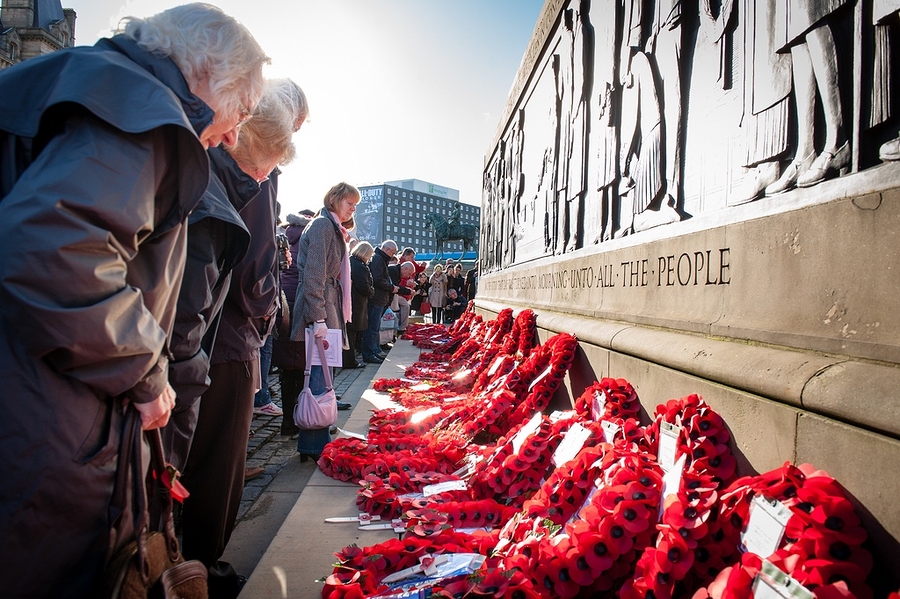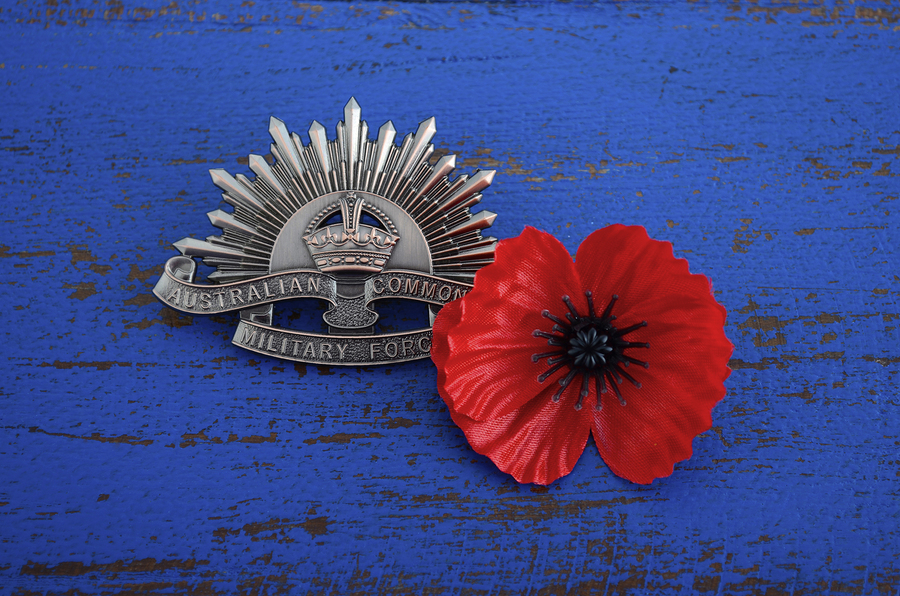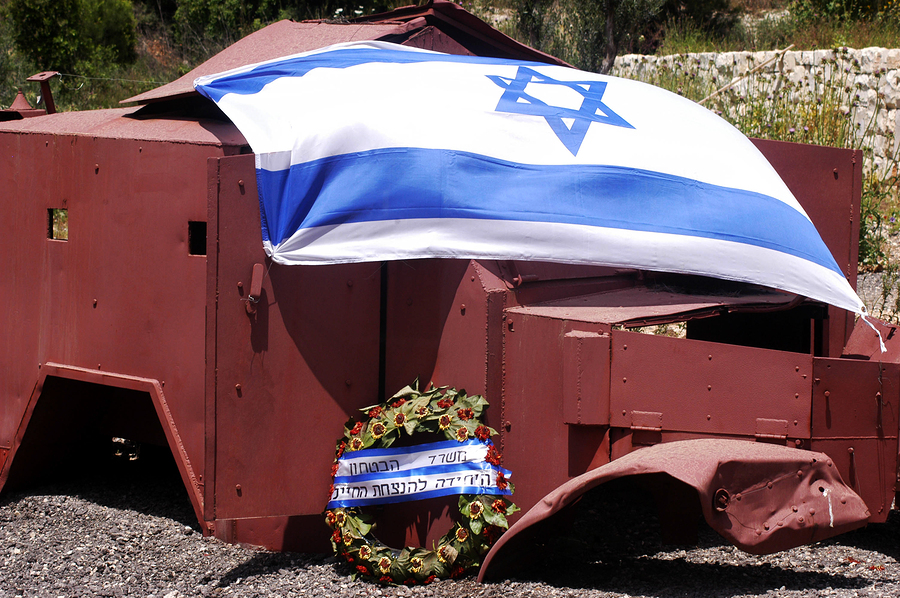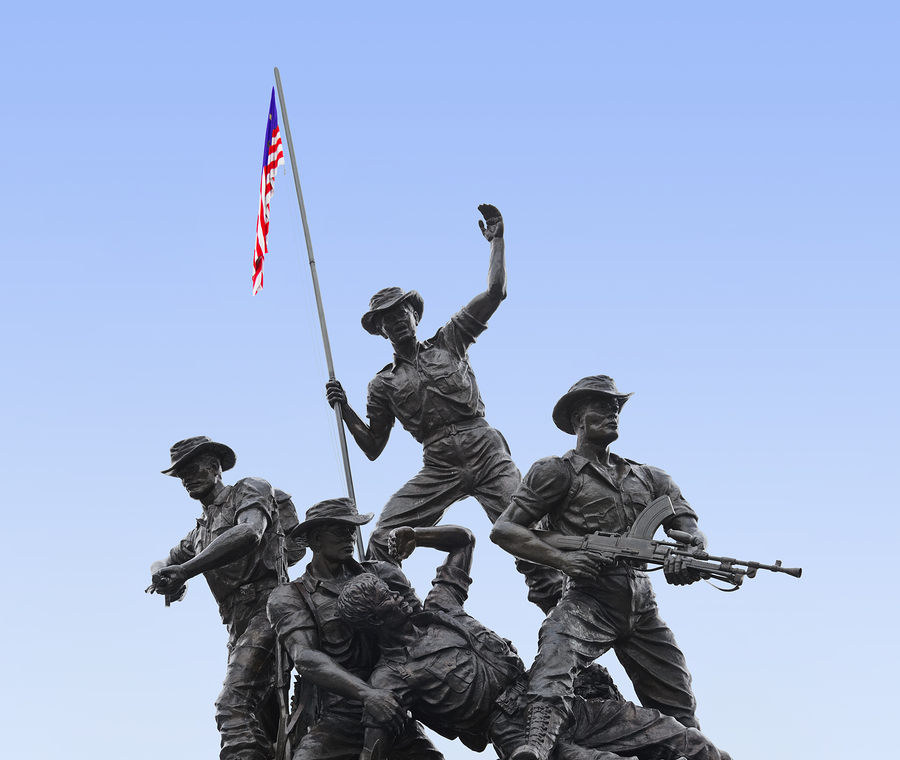REMEMBERING members of the armed forces who have died in the line of duty is a time-honoured tradition in many countries and official commemorative events began in 1919, after World War I. For most countries in the Commonwealth, Remembrance Day is November 11th, marking the end of the hostilities of the First World War "at the 11th hour of the 11th day of the 11th month" in 1918. Other countries have their own origins, dates and traditions associated with honouring current, former and fallen soldiers. Let’s take a look at some of them.
United Kingdom
In the UK, the first official commemoration of fallen soldiers was observed during the evening hours of November 10, 1919, at a banquet hosted by King George V at Buckingham Palace. The first official Armistice Day was held the following morning, commemorating the armistice signed between the Allies of World War I and Germany at Compiègne, France. Remembrance Day evolved out of Armistice Day after the Second World War, and both continue to be observed on the same date.

Commemorative events typically take place on Remembrance Sunday, which is celebrated on the Sunday nearest to November 11th. Most cities, towns and villages mark the occasion with ceremonies held at local war memorials, attended by currently serving military professionals, veterans and civilians alike. Perhaps the most commonly associated tradition is the playing of the ‘Last Post’ bugle call, followed by a period of silence at 11 a.m. In London, this is usually followed by wreaths of poppies being laid on memorials and the parade of veterans, which march past the Cenotaph in the National Service of Remembrance.
Canada
One of the most common symbols of remembrance is the red poppy. This became a familiar emblem due to the poem "In Flanders Fields", which was written by Canadian physician Lieutenant-Colonel John McCrae, in 1915. The poem, referencing the red poppies that grew over the graves of fallen soldiers, was written for the funeral of McCrae’s friend Alexis Helmer, who died fighting in the Second Battle of Ypres.
“In Flanders fields the poppies blow
Between the crosses, row on row”
The custom of wearing a red poppy on Remembrance Day quickly spread across the other Commonwealth countries and into Europe. Today, the selling of poppies in Canada is used as a fundraising campaign for the Royal Canadian Legion, which supports veterans and their families in need.
Australia
In Australia, Remembrance Day is always observed on November 11th, regardless of the day of the week. It is not a public holiday but some businesses, schools and institutions will observe a two-minute period of silence during the middle of the day as a sign of respect to the men and women who have died in battle. Members of the Australian Defence Force have been known to play the Last Post at major street corners in bigger cities around the country.

These days, ANZAC Day is the more popular remembrance day of those "who served and died in all wars, conflicts, and peacekeeping operations." April 25th was officially named ANZAC Day (which stands for Australian and New Zealand Army Corps) in 1916 and is a public holiday; it is commemorated in both Australia and New Zealand. This date is the anniversary of the first major casualties for Australian and New Zealand forces during the First World War – the Gallipoli campaign. The ANZAC force landed at Gallipoli on April 25th, meeting resistance from the Ottoman Army and resulting in 8 months of stalemate, with many casualties and great hardship.
New Zealand
As a commonwealth country, New Zealand observed Armistice Day between the World Wars, although it was always secondary to ANZAC Day. In 1921, a delayed shipment of paper poppies didn’t arrive in time for Armistice Day. The Returned Soldiers' Association (RSA) distributed the poppies at the next commemoration date, which happened to be ANZAC Day, and that day became the new “Poppy Day” in New Zealand. The 11th November was converted to Remembrance Day after World War II, but the campaign to re-establish the importance of the day was unsuccessful and by the mid-1950s the day was mostly ignored.
United States of America
Americans celebrate two different occasions in honour of their military personnel:
Veterans Day honours the service of all US military veterans and is observed on November 11th - it is both a federal and a state holiday, with most workers and federal employees having a day of leave from work. Previously known as Armistice Day (as it was in the other allied nations) the United States changed the name of the holiday at the end of the Korean War in 1954. They mark it with memorial ceremonies, salutes at military cemeteries, and parades.
Memorial Day honours those who died while in military service, and is held on the last Monday in May. The holiday originated as Decoration Day after the American Civil War in 1868, when Union veterans began the tradition of decorating the graves of dead Union soldiers, but merged with Confederate traditions to become Memorial Day in the 20th Century. The holiday is still marked by the decoration of graves today, often accompanied by religious ceremonies, picnics or potluck meals (a tradition said to have originated before the Civil War), and family reunions. It unofficially marks the beginning of the summer holiday season in the United States.

On the morning of Memorial Day, the flag of the United States is raised to the top of the flag pole and then solemnly lowered to the half-staff position, representing the loss of more than one million men and women who gave their lives in service of their country. At noon, the flag is again raised to the top of the staff, representing the living Americans who resolve to rise up and fight for liberty and justice and not to let the sacrifice of their fallen soldiers be in vain.
France
In France, Armistice de la Première Guerre mondiale on November 11th remembers those who died or were injured while serving in the military. Ceremonies include special church services and military parades, the most famous of which is probably the parade to the Tomb of the Unknown Soldier, under the Arc de Triomphe in Paris. The body of an unidentified soldier was buried here on Armistice Day in 1920, as a memorial to all unknown soldiers lost in conflict. The laying of wreaths and flowers at war memorials is also common, as is the tradition of displaying the flag at half-mast.
Italy
Italy has a number of remembrance and memorial ceremonies dedicated to both soldiers and civilians who have been affected by war. Since 2000, Giorno della Memoria (International Holocaust Remembrance Day) has been held on January 27th in memory of the Holocaust. On this day, all major institutions host commemorative events. On October 16th, the Jewish community organizes a ceremony at the Great Synagogue in Rome, commemorating the deportation of the Roman Jews in 1943. On March 24th, Italian dignitaries pay tribute to the victims of a Nazi perpetrated massacre in 1944, when 335 civilian and military Italians were killed at the site of the Fosse Ardeatine in Rome. On November 4th, Italians remember soldiers who died during the First World War at Giorno dell'Unità Nazionale Giornata delle Forze Armate (Day of National Unity Day of the Armed Forces), the day of the ceasefire that followed the Armistice of Villa Giusti in 1918. This armistice, which was signed on November 3rd, ended fighting between Italy and Austria-Hungary, just days before the official end of the war. National Unity and Armed Forces Day was only a public holiday between 1922 and 1976, but it is still marked with commemorative events today, such as the solemn wreath-laying ceremony at the Altare della Patria.
Israel
Yom Hasho’a, Israel’s Day of Remembrance of the Holocaust and Heroism, is held on the 27th day of Nissan in the Hebrew calendar, which is near the end of April or beginning of May. On this day, ceremonies, TV and radio broadcasts are all devoted to the memory of the millions of Jews killed by the Nazis, and to the heroism of the Jewish resistance to the Holocaust. First marked in 1951 and decreed by law in 1959, memorial services are held throughout the country. The state ceremony takes place at Yad Vashem, Israel’s Holocaust Remembrance organization.

Yom Hazikaron is the Remembrance Day for the Fallen of Israel’s Wars and for Terror Victims. It is commemorated every year on the fourth of Iyar, (near the end of April or the beginning of May). At 8 p.m. on the eve of Yom Hazikaron a siren is sounded, during which time everyone stands in silence. The siren is sounded again at 11 a.m. on the following morning. Flags are flown at half-mast and by law, all places of entertainment are closed during the public holiday.
Germany
The anniversary of the Armistice is not observed in Germany. Instead, Volkstrauertag ("national day of mourning") is held two Sundays before the first day of Advent, commemorating members of the German armed forces and civilians who have died in armed conflict. The German public holiday was established in 1922 and originally dedicated to the victims of World War I. During World War II, the Nazis repurposed the day as a glorification of war and the celebration of their heroes. After World War II, Volkstrauertag was moved to its current date to “symbolize a clear break with the fascist ideology and the Nazis' perversion of the holiday's initial aim.”
Volkstrauertag was first observed in its modern form in 1952, as a ceremony in which the President holds a speech and members of parliament sing the soldier's song “Der gute Kamerad”. In some regions of Germany, music or dance events are prohibited during Volkstrauertag, as it is considered a silent day of mourning.
The Netherlands
Dodenherdenking is held on May 4th in the Netherlands, remembering those who died during war and in peacekeeping operations. Every year, people dedicate two minutes of silence at 8 p.m. to pay their respects and wreaths are laid at the National War Memorial in Amsterdam. On May 5th, Liberation Day commemorates the end of the Second World War, with events such as Bevrijdingsfestival. This public festival, held in locations across the Netherlands, celebrates freedom with music, art, theater, food and drinks. In Amsterdam, thousands of people gather to see the free concerts at Museum Square.
Hong Kong
In 1977, Hong Kong was transferred to Chinese sovereignty and was no longer under the British Commonwealth. Since then, Remembrance Day is no longer a public holiday; however, Remembrance Sunday is still marked by a multi-faith memorial service at the Cenotaph. The memorial service resembles those in many other Commonwealth countries, including the sounding of "Last Post", two minutes of silence, the sounding of "Reveille", the laying of wreaths, prayers and the recitation of the "Ode of Remembrance".
Malaysia

In Malaysia, Warriors' Day is the annual observance held on July 31st that honours all individuals who lost their lives in the line of duty throughout Malaysia's history, including servicemen and women killed during the two World Wars and the 12-year Malayan Emergency. During commemorative events, dignitaries gather in a full military ceremony of flag processions, the laying of wreaths, medal presentations and pantomimes. The “Last Post” is also played in Malaysia.